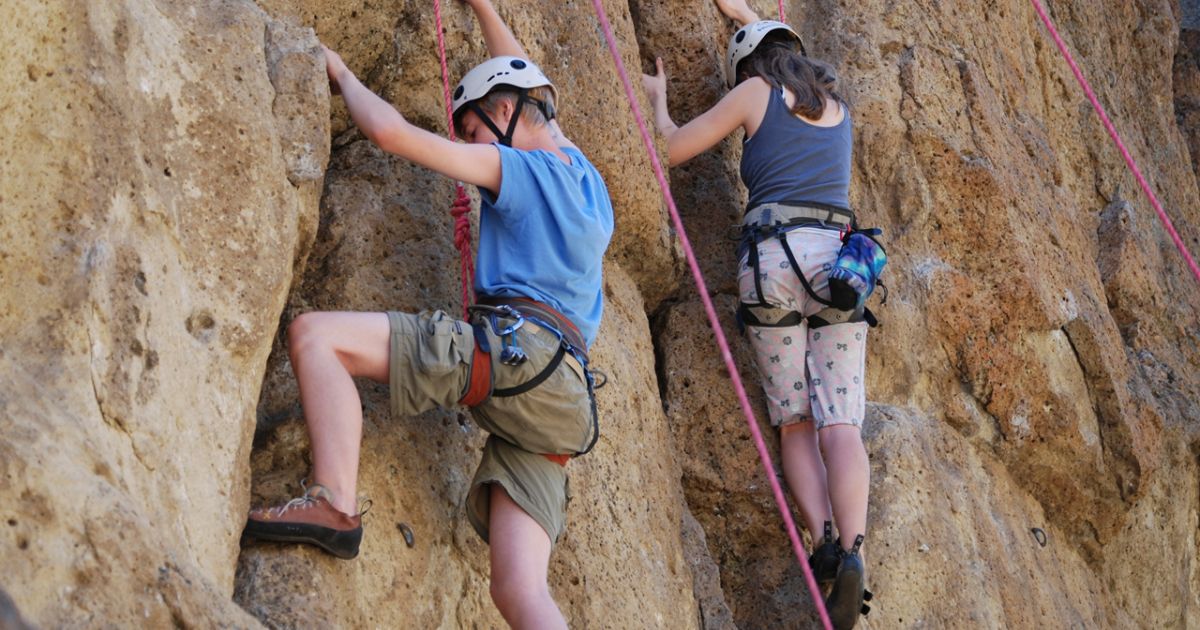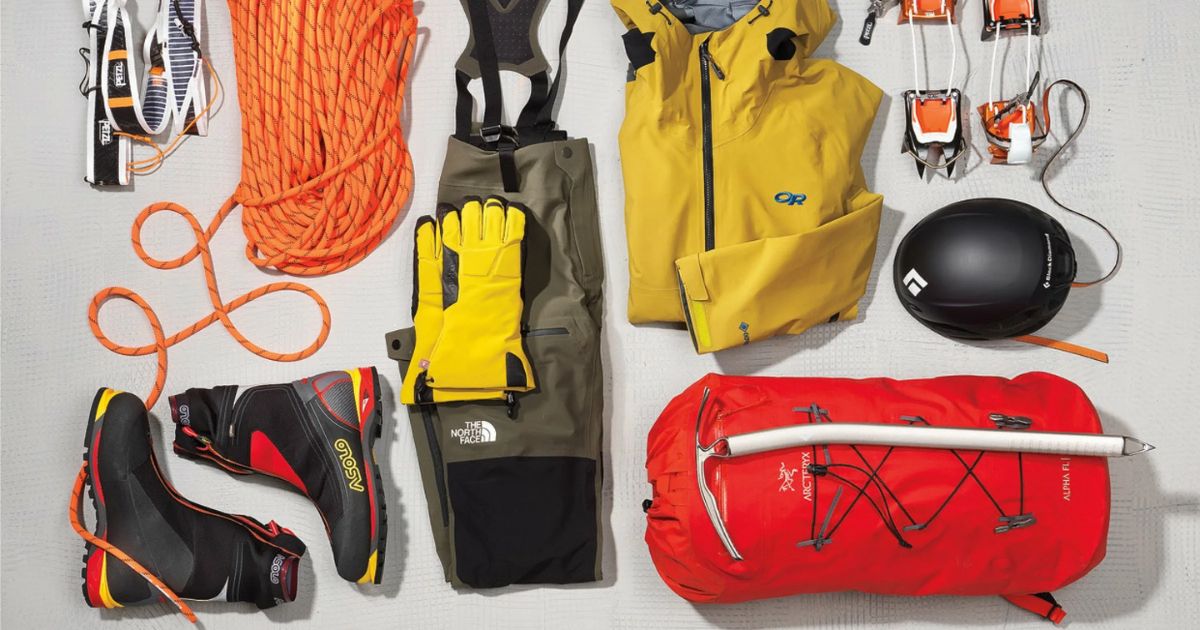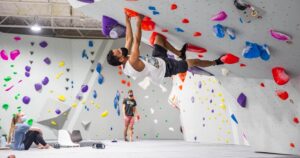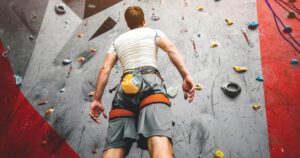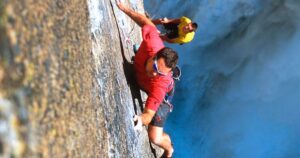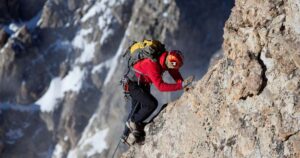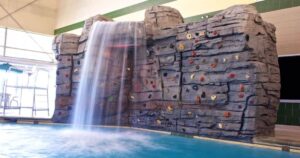In the exhilarating world of vertical exploration, two distinct disciplines captivate thrill-seekers and outdoor enthusiasts alike: bouldering and rock climbing. Like towering giants, these activities stand as pillars of physical and mental resilience, demanding both skill and strength. While bouldering challenges climbers on shorter, freestanding formations, rock climbing encompasses the conquest of monumental cliffs and crags. As we delve into the nuances of these pursuits, we will unravel the equipment, techniques, safety considerations, and community aspects that define each, inviting you into a community that cherishes the art of ascending.
Key Takeaways
- Bouldering and rock climbing require different types of shoes, with bouldering shoes having a downturned shape and sticky rubber soles for better grip on small holds, while rock climbers may prefer shoes with a flatter profile for comfort during longer routes.
- Bouldering focuses on precise movements and demands strength and power, while rock climbing involves longer routes and focuses on endurance training.
- Body positioning, balance, and grip strength are crucial in both bouldering and rock climbing.
- Bouldering involves shorter climbs of 10 to 20 feet, while rock climbing can include routes that extend up to several hundred feet, requiring endurance and stamina.
Equipment and Gear
When it comes to equipment and gear, both bouldering and rock climbing require specific items to ensure safety and success. One of the most essential pieces of equipment for climbers is climbing shoes. Different types of climbing shoes are designed to cater to various climbing styles and terrains. For bouldering, shoes with a downturned shape and sticky rubber soles are preferred to provide better grip and precision on small holds.
On the other hand, rock climbers may opt for shoes with a flatter profile, allowing for greater comfort during longer routes. Additionally, climbers also rely on chalk bags to maintain a firm grip while climbing. Chalk bags come in various designs and sizes, allowing climbers to choose the one that best suits their needs. These essential pieces of equipment are crucial for climbers to conquer the challenges they face on the wall and ensure their safety and success.
Difficulty and Skill Level
Bouldering and rock climbing differ in terms of the level of difficulty and skill required, with bouldering typically demanding a higher frequency of precise movements and rock climbing often involving longer routes and endurance. When it comes to training and conditioning, bouldering requires intense focus on strength and power, as climbers need to be able to execute explosive movements in short bursts.
Rock climbing, on the other hand, emphasizes endurance training, as climbers need to sustain their energy and stamina over longer periods of time. Both bouldering and rock climbing present mental and physical challenges. Bouldering demands problem-solving skills and quick decision-making, while rock climbing tests a climber’s ability to manage fear and remain calm in high-stress situations. Mastering these skills requires dedication, practice, and a deep understanding of one’s own capabilities.
Climbing Techniques
Climbing techniques in both bouldering and rock climbing require a mastery of precise movements and a deep understanding of one’s own capabilities. Body positioning plays a crucial role in successfully ascending both boulders and rock walls. In bouldering, climbers rely on dynamic movements and explosive power to overcome short, challenging routes. Maintaining balance and using efficient body positioning is essential to execute complex moves.
On the other hand, rock climbing involves longer routes where endurance and technique are paramount. Climbers must focus on maintaining a steady pace, conserving energy, and utilizing proper body positioning to navigate through varying terrain. Grip strength is another crucial aspect in climbing, as it allows climbers to securely hold onto handholds and footholds. Developing grip strength helps climbers maintain control and stability throughout their ascent. Transitioning into the next section, the discussion will delve into the impact of height and route length on climbing experiences.
Height and Route Length
The impact of height and route length on the experience of ascending both boulders and rock walls is a crucial aspect to consider. When it comes to height, bouldering typically involves shorter climbs that range from 10 to 20 feet, while rock climbing can involve routes that extend up to several hundred feet. The shorter height in bouldering allows climbers to focus on intricate movements and techniques without the added challenge of endurance and stamina required for longer climbs.
Additionally, the length of the route in rock climbing presents a different set of challenges, requiring climbers to have the necessary endurance to complete the ascent. Both bouldering and rock climbing have their limitations and restrictions, which can be overcome through proper training and conditioning. Moving forward, it is important to address the safety considerations associated with both bouldering and rock climbing.
Safety Considerations
When considering the safety aspects of ascending both boulders and rock walls, it is important to take into account several key factors. Risk management and injury prevention are paramount in both bouldering and rock climbing. Both activities involve inherent risks, such as falling from heights and potential injuries from equipment failure or environmental factors. To mitigate these risks, climbers must prioritize safety measures.
This includes thorough inspection of equipment, proper training and technique, and using crash pads or spotters in bouldering to minimize impact in case of a fall. Additionally, climbers should be aware of environmental conditions like loose rocks, unstable terrain, and weather changes that could affect safety. Regular maintenance and evaluation of climbing routes and equipment are crucial to ensuring a safe climbing experience. By practicing effective risk management and injury prevention techniques, climbers can enjoy the thrill of ascending boulders and rock walls while minimizing potential dangers.
Community and Social Aspects
What role do community and social aspects play in the world of bouldering and rock climbing? Climbing is not just an individual pursuit; it is a community-driven activity that fosters a sense of belonging and camaraderie. Here are three key aspects of the climbing community that enhance the social experience:
- Climbing competitions: These events bring climbers together to showcase their skills and push their limits. Competitions create a supportive and encouraging atmosphere where climbers can cheer each other on and celebrate achievements.
- Training and coaching opportunities: Climbing gyms and outdoor climbing organizations offer training programs and coaching sessions. These opportunities allow climbers to learn from experienced professionals, improve their skills, and connect with others who share their passion for climbing.
- Social gatherings and events: Climbing communities often organize social gatherings, such as group climbing sessions, movie nights, and outdoor trips. These events provide climbers with the chance to meet new people, share experiences, and build lasting friendships.
Frequently Asked Questions
Can Bouldering or Rock Climbing Help Me Build Muscle and Improve My Overall Fitness?
Bouldering and rock climbing are both excellent activities for building muscle and improving overall fitness. These sports require a combination of strength, endurance, and flexibility, resulting in improved muscular development and increased cardiovascular health.
Is It Possible to Go Bouldering or Rock Climbing Alone, or Do I Always Need a Partner?
Yes, it is possible to go bouldering or rock climbing alone, but it is recommended to have a partner for safety. Going solo requires additional safety precautions, such as proper equipment and knowledge of self-rescue techniques.
Are There Any Specific Exercises or Training Routines That Can Help Improve My Bouldering or Rock Climbing Skills?
To improve bouldering or rock climbing skills, incorporating exercises such as fingerboard, core strengthening, and antagonist training can be beneficial. It is important to avoid common mistakes such as over gripping and neglecting proper technique.
Can Bouldering or Rock Climbing Be Done Indoors, or Is It Strictly an Outdoor Activity?
Bouldering and rock climbing can be done both indoors and outdoors, offering different advantages and disadvantages. Indoor bouldering provides a controlled environment for training, while outdoor bouldering offers the excitement of natural rock formations. The necessary equipment includes climbing shoes, chalk, and crash pads.
Are There Any Age Restrictions or Limitations for Bouldering or Rock Climbing?
Age restrictions and safety guidelines vary for bouldering and rock climbing, with some facilities having minimum ages for participants. It is important to follow these guidelines to ensure a safe and enjoyable experience for all climbers.
Conclusion
In conclusion, bouldering and rock climbing are two distinct forms of climbing that offer unique challenges and experiences. Bouldering involves climbing shorter routes without the use of ropes and relies heavily on technique and strength. Rock climbing, on the other hand, involves ascending longer routes with the aid of ropes and requires a higher level of skill and endurance. Both activities offer a sense of community and provide opportunities for personal growth and achievement.
